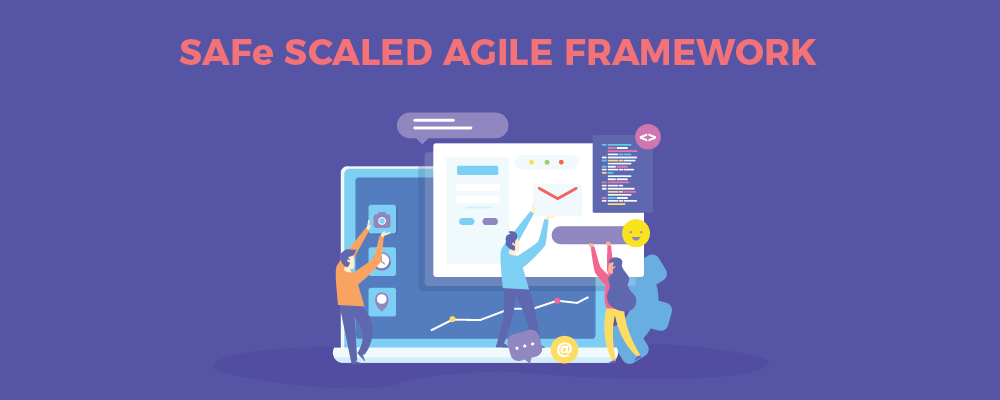While companies are buying cloud infrastructure to enhance productivity, managing the cloud requires more than that. To reap the desired benefits, companies need to adopt an integrated approach to better faster software delivery, better performance, and advanced data analytics.
One of the ways companies are doing this is by leveraging DevOps tools.
This is because DevOps tools empower teams to automate processes, reduce deployment time, and facilitate effective collaboration.
This guide will discuss how DevOps tools can help you scale your cloud infrastructure and which areas they affect. But before that, let’s briefly discuss how cloud and DevOps intertwine and create an impact.
Cloud Computing and DevOps: How Do They Intertwine?
Most people think that cloud computing and DevOps are different strategies, but if you look closely, they have a symbiotic relationship.
Let’s understand with a brief analogy:
Consider Cloud computing as an engine, providing the necessary infrastructure, scalability, and resources. On the other hand, picture DevOps as the driving force, leveraging automation, collaboration, and continuous delivery practices to maximize the potential of the cloud.
Much like the gears in a machine, the cloud and DevOps work in tandem. They complement and enhance each other’s capabilities. Cloud computing provides the foundation for DevOps practices by enabling on-demand scalable resources and infrastructure. And DevOps leverages the cloud’s capabilities to automate the testing and deployment processes.
Combining both ensures consistent and rapid delivery of software applications, giving you a competitive edge.
3 Ways DevOps Tools Can Help Scale Your Cloud Infrastructure
Cloud scalability means increasing workloads within existing infrastructure without sacrificing performance. To do that, most businesses switch from traditional data centers to automation and manage cloud resources pragmatically.
DevOps tools make such complex processes easier. Let’s explore how this is possible with in-depth examples and understand the impact of DevOps tools on the cloud.
-
Continuous Integration and Continous Delivery (CI/CD)
-
- Automating deployments: Popular CI/CD tools like Jenkins and Gitlab have hundreds of plugins to automate any project and track changes to the cloud environment. These capabilities eliminate manual errors and ensure effective collaboration crucial for effective scaling.
- Testing and Validation: Testing is The most time-consuming deployment pipeline task. But with CI/CD testing tools like CircleCI and TeamCity, you can automatically test code and track granular changes. By validating these changes before deployment, teams can mitigate risks associated with scaling and ensure that the infrastructure can handle increased workloads.
- Continuous Monitoring: CI/CD tools like Prometheus, Grafana, and ELK Stack provide metrics and logs for infrastructure and application performance. By incorporating monitoring them, teams can receive feedback on the impact of scaling changes, detect performance issues, and make data-driven decisions to optimize resource utilization.
-
-
Cloud infrastructure management involves multiple teams, such as development, operations, security, networking, and compliance. Effective collaboration ensures that these teams work together, align their efforts, and share their expertise. By leveraging DevOps tools, teams can utilize their diverse skill sets and perspectives to foster continuous improvement when managing the cloud infrastructure. Let’s explore how this happens practically:
- Break Down Silos: DevOps tools enable developers, operations, and quality assurance teams to collaborate seamlessly in a unified pipeline. It allows teams to submit requests and feedback in a single hub, get real-time insights, and track changes, enabling them to break down silos and analyze data seamlessly.
- Role-Based Access Control (RBAC): The DevOps philosophy focuses on security. Many DevOps tools provide RBAC capabilities, allowing teams to define granular access controls based on roles and responsibilities. This promotes collaboration while maintaining safety and governance. Teams can work together and manage tasks without compromising sensitive information.
- Better focus on customer satisfaction: By integrating automated testing tools, teams can reduce time spent on testing activities and work towards their ultimate goal: Customer satisfaction.
Security Automation
-
As per recent reports, cloud security is a top concern for 83% of organizations Let’s explore how DevOps tools can boost security automation and help companies identify threats:
- Threat detection: Tools like Terraform and Ansible help companies detect threats in less time by automating configuration firewalls. They also respond to data threats faster by automating blacklists, whitelists, and other suspicious workloads.
- Application testing: CI/CD tools like CircleCI and Selenium help identify potential security vulnerabilities and coding errors. You can automate the entire app testing process to track and remediate security issues early during development.
- Visibility and Auditing: DevOps tools help you track development changes in the cloud made during each deployment. The visibility enables better auditing, allowing you to detect unauthorized changes and investigate potential security incidents.
Real-life Examples of Companies Combining DevOps and Cloud Computing
Now that we have understood how companies can use DevOps tools for their workflows, let’s look at some real-life examples of how companies use them to boost their productivity.
Netflix
-
Netflix is known to be a revolutionary in the streaming industry. It introduced a convenient way for viewers to watch shows online and enhanced the user experience by adding interactive screens and features.
So is it that the company was able to achieve that? While the answer relies on multiple factors, a significant contributing factor was DevOps and Microservice architecture.
Back when it was launched, Netflix faced increasing traffic on its app. To handle user data more efficiently and iterate continuously, the company shifted from a monolithic cloud model to a microservice cloud architecture, allowing teams to work on small, focused services, enabling faster development cycles and seamless integration. The model aligns well with DevOps practices as they promote agility.
The company also embraces DevOps tools and philosophies to make data-driven decisions. It invests heavily in automation to empower teams to provision resources, run tests, and deploy applications with minimal manual intervention to give users a seamless watching experience.
By embracing DevOps practices, Netflix achieved high scalability and customer satisfaction. This is a prime example of how DevOps can drive successful business outcomes.
Etsy
With over 2.8 million sellers, Etsy has established itself as one of the leaders in the vintage and handcraft goods sector. To cater to its growing business needs, the company decided to scale its cloud infrastructure with Google Cloud Platform and also started integrating continuous deployment tools into workflows.
Etsy implements continuous integration and deployment practices to automate its software delivery processes. With tools like Jenkins and Spinnaker, Etsy achieves frequent and reliable deployments. CI/CD pipelines are employed to automate testing, packaging, and deployment, ensuring that changes to the platform are thoroughly tested and safely released to production.
Start Slowly But Surely
The significance of cloud computing and DevOps tools cannot be overstated in a technology-driven world. While cloud computing provides organizations with the scalability, flexibility, and cost-efficiency needed to support modern software development, it alone is not enough to create a difference.
The bottom line is that you should leverage automation and DevOps practices to seamlessly scale and get the operational excellence you need for a competitive edge. Although integrating DevOps into your existing workloads can be a difficult journey, you can start slowly and test out different strategies to see which one affects your productivity. And ensure that you assign metrics and train your team to get the most out of these tools.
By leveraging CI/CD tools, organizations can manage cloud infrastructure more effectively, ensure faster deployments, and scale resources to meet increasing demands. Here’s how they can help do this:
Effective Collaboration

